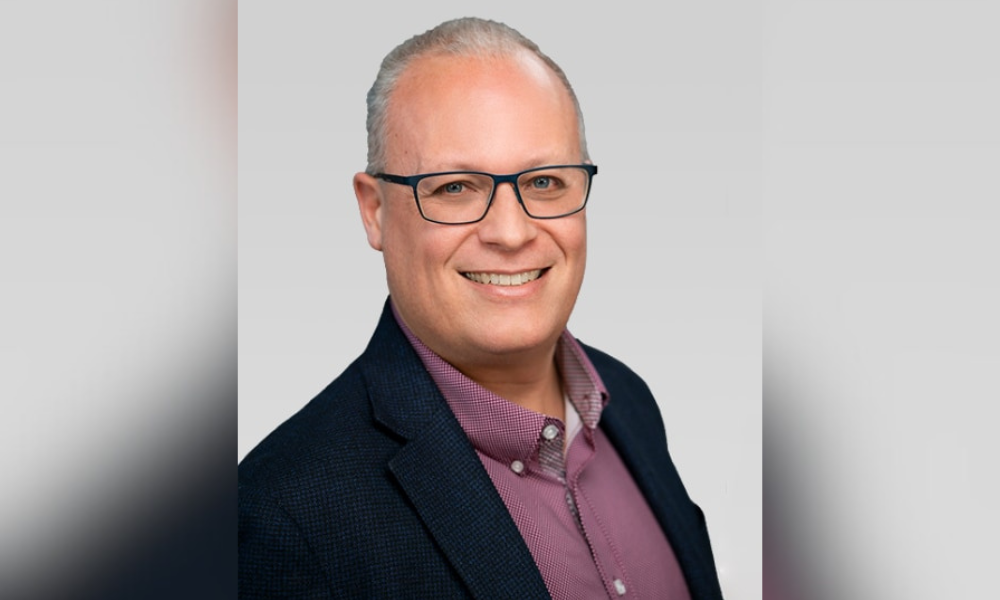HR Leader profile: Steven Beggs of Wolseley Canada talks about pragmatic leadership, building the talent pipeline and AI risks

After serving 12 years in the Canadian military, Steven Beggs was injured and needed to take a different career path – luckily, he found a new passion when his friend introduced him to a sales role at a leadership training consultancy.
“I got into it and discovered, oh my goodness, I loved the space. I thoroughly enjoyed the learning space in particular,” says Beggs, who is now vice-president of human resources at Wolseley Canada.
“It really was an accident to get into the HR space as a whole, but, yeah, I’m not looking back, I have loved it.”
So, what was it about L&D that captured Beggs’ enthusiasm?
“It’s going to sound a little bit corny, but it’s the truth — the opportunity to help people get better at what they do, so that they can be more successful. I just loved it… that’s my sweet spot.”
What made it interesting as well was realizing that the challenges individuals or organizations were facing were transferable, he says.
“We were seeing the same things in multiple organizations, in multiple industry verticals.
"It’s like, ‘OK, I’ve heard this journey before, I’ve heard this challenge before, here’s some ideas — if they fit, let’s massage them a little bit, and then let’s implement them.’”
Shifting to broader talent responsibilities
Beggs’ responsibilities began to expand as he took on more senior roles at major companies, including American Express, Home Depot and L3Harris Technologies.
Five years ago, he joined Wolseley — a national distributor of plumbing, HVAC/R and PVF products — partly because “the right leader” offered him the role and also because he saw a lot of growth potential in the company.
Wolseley has roughly 3,000 employees spread across more than 200 locations in Canada, and an HR team of about 50 that includes training and health and safety.
“My responsibility is to help make sure that we're delivering our strategic plan for the business — and that's not just the HR strategic plan, that's the business strategic plan,” says Beggs.
Three areas of focus for HR leader
Beggs identifies three key HR areas where he hopes “to move the needle”: the talent pipeline, culture and engagement, and sales competencies.
In building the pipeline, it’s about looking at the high-potential and emerging talent, he says.
“How do we identify them? How do we develop them? How do we keep them? How do we get them engaged into this business?”
Beggs has also been working to shift the language within Wolseley, pushing employees to see their work as more than just a job.
“I want people to stop saying, ‘I have a job at Wolseley.’ I want them to say, ‘I have a career here’ and really convince those individuals ‘We are invested in your success, your potential and your future, so how do we grow and develop you?’”
Another priority is fostering culture and engagement, though he’s quick to point out that this is a shared responsibility.
“I don’t personally believe that HR owns culture and engagement, but we sure as heck steward it for the organization,” says Beggs.
“So, how are we reinforcing the values, the culture? How are we ensuring that our associates are engaged with the vision that we have, engaged with the business and our customers, excited about coming to work? And how do we look after them properly?
And a large element of that engagement rests with line leadership, he adds.
Sales competencies is another area where Beggs is applying his L&D expertise. He sees opportunities to build sales skills not just among traditional sellers but across the organization, such as warehouse associates who interact with customers.
“They're learning our product because they're handling it on a daily basis — shipping and receiving, picking orders for customers — [so] as they build that familiarity with the product, now I’ve got to be thinking about, ‘Well, how do I now get them to translate that so they can interact directly with the customer?’”
It’s about building those skills deep in the organization, says Beggs, so the employees can advance and grow their careers.
Pragmatism and business success
One lesson Beggs says he has adopted is the value of being pragmatic in the learning and talent space.
Early in his career, he followed rigid frameworks like the ADDIE model and the Kirkpatrick Model.
But, over time, Beggs learned to balance structure with flexibility.
“I wouldn’t set those things aside — they’re important, they add value, they add structure, and if you don’t know where to start, those are great places to start — but sometimes those things can paint us into boxes, and they can maybe make us move a little bit slower than we need to move for the sake of the business.”
In explaining how he increasingly takes a more pragmatic solution to solutions, Beggs says he jokes with his team: “Bronze is gold. I don’t have to be the best if I’m on the podium — that’s a win, right?”
While they might aspire to be best in class, that’s not always what the business wants or needs, he says.
“Sometimes, striving for that extra little bit — ‘What if we did this?’… can take a lot of time. Sometimes the business is more oriented towards ‘We need a workable solution now’ rather than the perfect solution later.”
Top challenges for HR in 2024
Like many HR leaders, Beggs says artificial intelligence (AI) is both a challenge and an opportunity.
While he says there’s “a ton of potential” and there are some themes developing, he’s not yet seeing “real, meaningful movement… it doesn't really look like anybody has figured it out yet.”
For now, Wolseley is trying out AI in the low-risk, low-cost area of L&D, says Beggs.
“The deeper we let AI go into our data to understand our people — who they are, where they are, what motivates them… the bigger the risk that comes with that, particularly if it gets breached, so I think things are going cautiously.”
Also a challenge for HR? Demonstrating value to the business, he says.
“There’s core stuff that we just have to do... but if all we’re doing is just the basics, the challenge for me is that’s not adding to the business, that’s just behind-the-curtain stuff that everybody has to do.”
To Beggs, HR must contribute to the company’s growth by understanding business drivers, and that means asking questions like: “Do we understand the business? Do we understand what's important for them? Do we understand the metrics that are driving them? Do we understand the language they're using? And are we actually adding value?”
HR is no longer about getting a seat at the table, he says, but demonstrating value.
“How are you actually moving the needle for the business? I think that’s a perennial HR issue.”




